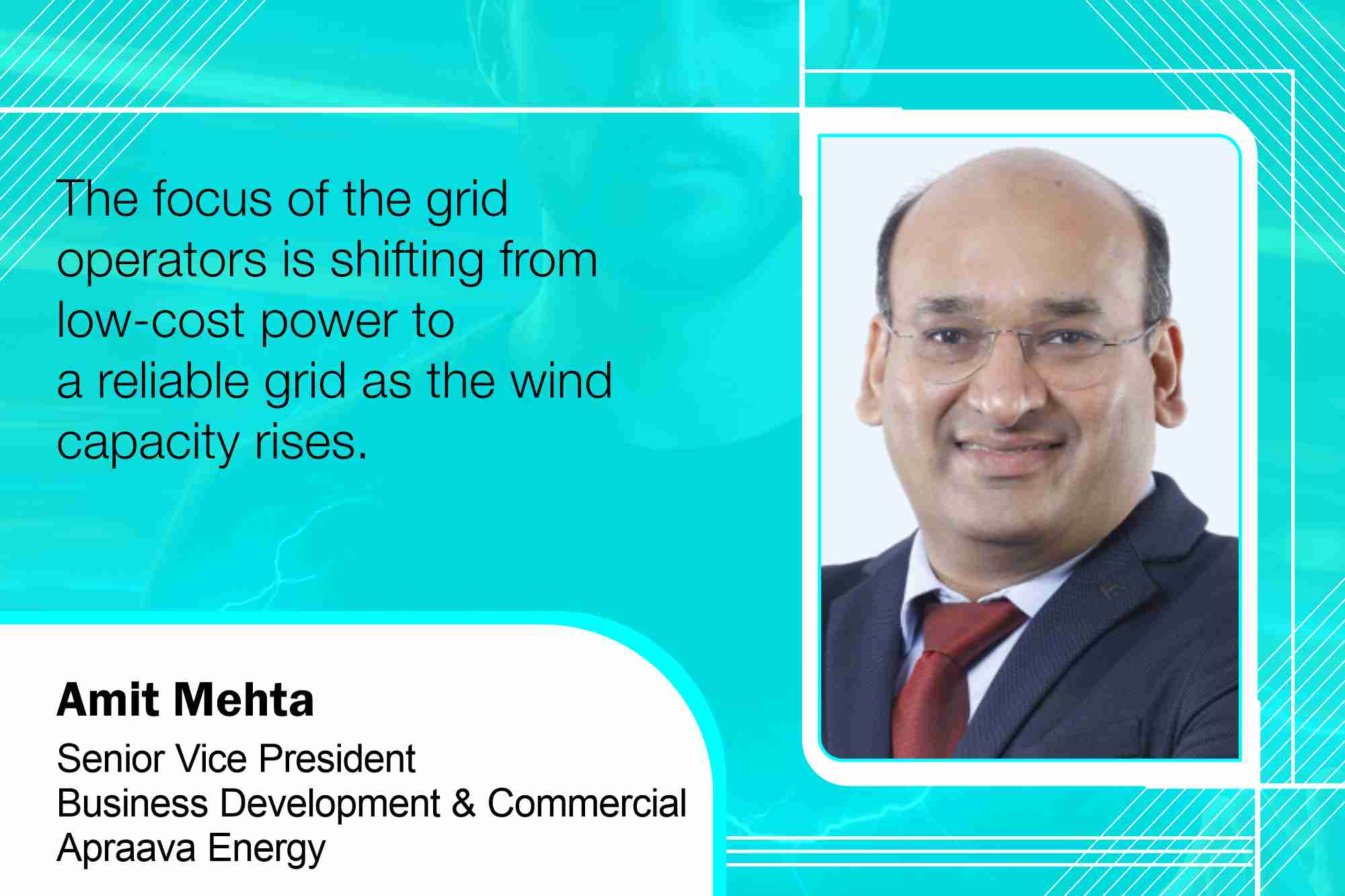Wind power boosting grid reliability
By Staff Report May 24, 2025 2:22 pm IST
By Staff Report May 24, 2025 2:22 pm IST

The focus of the grid operators is shifting from low-cost power to a reliable grid as the wind capacity rises
The FDRE/RTC tenders issued by the Renewable Energy Implementation Agencies (REIA), such as SECI, NTPC, NHPC, and SJVN, indicate a growing emphasis on wind power. This trend is also reflected in the higher tariffs being realised by wind energy on power exchanges. Existing players are responding by enhancing turbine technology, particularly larger sizes, and ramping up capacity to meet the latent demand. Also, the focus of the grid operators is shifting from low-cost power to a reliable grid. Amit Mehta of Apraava Energy has more to say; let us hear him.
How does wind energy help improve grid reliability alongside solar power?
In the wake of an increase in wind capacity driven by a combination of factors such as growing demand from the grid operators, the availability of wind sites and expanded manufacturing capacity, the focus of the grid operators is shifting from low-cost power to a reliable grid. While the wind generation cost is higher than solar, it complements solar generation and provides a balancing source. With the significant addition of solar power, the “duck curve” problem becomes more severe (more power during the peak afternoon hours results in steep ramp-up and ramp-down requirements from thermal plants). Wind provides a complementary generation source to solar energy as wind generation is higher during the night hours and during the monsoon season when solar energy is non-existent or lower. Hence, there is an increased demand for wind energy.
What strategies and technologies are leading to safety and operational efficiency?There is an increased focus on and awareness of safety and health, safety, security, and environment (HSSE) requirements. Thankfully, it is percolating down to the lowest-level contractors operating at the site. Protocols are becoming stringent when working at heights, and PPE (safety equipment) is used for protection from noise pollution, electrical hazards, etc. While these measures have been known and are standard safety measures, these are being implemented with a higher rigour. There is an increased focus on behavioural safety that extends beyond work processes. Daily safety briefings are conducted for labourers; medical tests are carried out for incoming labour before deployment, and random alcohol checks are performed for vehicle drivers. From a maintenance perspective, there is a growing shift from preventive to predictive maintenance. Advanced technologies and software are extensively used to assess component health and anticipate potential failures, allowing for more targeted maintenance protocols. The increasing use of digital twins has further enhanced plant insights, reducing breakdown time and improving the safe operation of turbines.
What are the main challenges in wind energy development and optimising wind, solar and storage capacity in hybrid projects?
The traditional challenges associated with wind energy persist, such as micrositing, accurate wind resource assessment, land acquisition and right of way (ROW) for pathways and transmission lines. Another recent challenge has been the limited availability of economically viable wind sites. Wind speeds in India are generally low, making many locations unsuitable for 2–3 MW turbines. However, more sites are becoming viable with the increasing deployment of higher-capacity turbines (4–5 MW). These larger turbines can operate efficiently at lower wind speeds, and their use reduces the number of units needed for a given plant capacity, easing land acquisition challenges. With wind projects increasingly being deployed as part of hybrid solutions, a key challenge lies in appropriately sizing the wind component about tender requirements and site availability. Hybrid and firm and dispatchable renewable energy (FDRE) tenders typically specify the overall project capacity and expected plant load factor (PLF) for example, 300 MW with an annual PLF of 80 percent but do not prescribe the split between wind, solar and battery energy storage systems (BESS). This sizing responsibility falls on the developer, who must balance site constraints, tender conditions and tariff optimisation to remain competitive.
We use cookies to personalize your experience. By continuing to visit this website you agree to our Terms & Conditions, Privacy Policy and Cookie Policy.